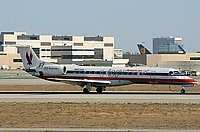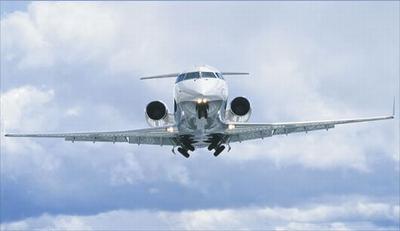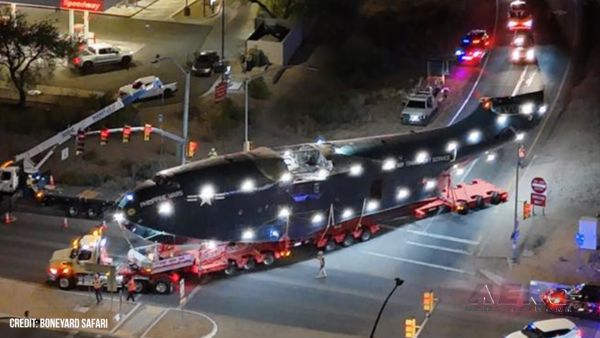NBC Report Latest To Say RJs To Blame For Many Delays
 It's the increasing number of
airliners competing for runway space -- particularly regional jets
-- that are a major cause of airline delays, according to several
recent reports cited by the Aircraft Owners and Pilots
Association.
It's the increasing number of
airliners competing for runway space -- particularly regional jets
-- that are a major cause of airline delays, according to several
recent reports cited by the Aircraft Owners and Pilots
Association.
"Fewer seats, cheaper to fly, but competing for the same limited
space on runways," NBC's Tom Costello said in his August 14 report
on airline delays.
As ANN reported earlier this
week, airlines have grounded 385 larger aircraft since
2000, and replaced them with more than 1,000 RJs. All that's needed
to measure the resulting impact on the nation's air traffic control
system is a calculator... or, a look at the tarmac at a busy
airport.
That also confirms AOPA's analysis. Delays are the worst in the
New York area, and getting worse every year. Yet since Congress
removed the FAA's ability to limit the number of flights into those
airports (slot control), the airlines have added more and more
aircraft... sometimes to the point where the number of scheduled
flights exceed the number of operations the airport can handle in
VFR conditions, according to the pilot advocacy group.
"It's the runways," said AOPA President Phil Boyer. "Neither the
airlines nor the FAA have yet to explain how NextGen (modernized
air traffic control system) is going to allow them to get more than
one operation per minute on a runway."
Thirty takeoffs and 30 landings per hour is the theoretical
maximum for a runway in optimal conditions, according the FAA's
Capacity Modeling and Analysis Group.
For example, the FAA's Airport Capacity Benchmark report shows
that New York's JFK airport can handle one flight every 41 seconds
during optimal visual conditions, using two runways simultaneously.
Yet to meet the airlines' schedules during some of the "push"
times, air traffic controllers would have to get an airliner on or
off the runway every 36 seconds. During instrument conditions
(visibility less than three miles or ceiling less than 1,000 feet),
the FAA says the maximum is 17 flights every 15 minutes; the
airlines have scheduled up to 25.
While the airlines try to point the finger at the number of
corporate jets flying to and from New York, general aviation
aircraft accounted for only 2.3 percent of the traffic at the hub
airports of JFK, LaGuardia, and Newark during the first six months
of 2007, according to figures cited by AOPA.
Nor is the problem the number of general aviation aircraft in
the New York airspace. "That's a red herring," says Steve Brown,
the former FAA Association Administrator of air traffic services.
Corporate jets using Teterboro, Westchester County, and other New
York-area airports flew routes below, above, and around the airline
operations into the three New York hub airports, according to
Brown.

Air traffic controllers agree. "Corporate aircraft are not the
reason for system delays," said Patrick Forrey, president of the
National Air Traffic Controllers.
"As long as the airlines operate a hub-and-spoke system, putting
fewer passengers on more aircraft, all trying to arrive and depart
at the same time, system delays are inevitable," said Boyer. "More
runways would help, but it takes at least a decade to build a new
runway in a major metropolitan area -- if local politics will allow
it."
 ANN's Daily Aero-Term (05.19.25): Fuel Remaining
ANN's Daily Aero-Term (05.19.25): Fuel Remaining ANN's Daily Aero-Linx (05.19.25)
ANN's Daily Aero-Linx (05.19.25) Klyde Morris (05.16.25)
Klyde Morris (05.16.25) Airborne 05.19.25: Kolb v Tornados, Philippine Mars, Blackhawk Antler Theft
Airborne 05.19.25: Kolb v Tornados, Philippine Mars, Blackhawk Antler Theft Airborne-Flight Training 05.15.25: Ray Scholarship, Alto NG, Fighter Training
Airborne-Flight Training 05.15.25: Ray Scholarship, Alto NG, Fighter Training




